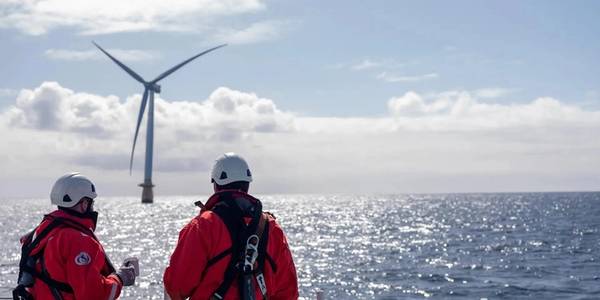
Hywind Scotland, the first floating offshore wind farm in the world, has been running for five years now. It was put into service in 2017.
Located off the coast of Peterhead, Scotland, it is the world’s first floating offshore wind farm, and, according to operator Equinor, it is also the world’s best-performing offshore wind farm, achieving a capacity factor of 54% over its five years of operations.
"Importantly, Hywind Scotland has run to high safety standards, marking five years of no loss time injuries during its operation," Equinor said.
With a capacity of 30 MW generated by 5 turbines, Hywind Scotland uses the Hywind floating spar-substructure concept. The wind farm generates enough electricity to power the equivalent of 34,000 UK homes.
Also, Equinor’s next floating wind project, Hywind Tampen, which will be the world's largest floating wind farm once operational, delivered its first power earlier this fall.
William Munn, Plant Manager of Hywind Scotland at Equinor, said: "Operating the Hywind Scotland project for the past five years has informed Equinor of some of the unique challenges associated with a floating wind farm, and the rewards if we get it right.
"Because of its location and the harsh weather conditions it encounters, Hywind Scotland has exposure to higher wind speeds than we typically see on a fixed-bottom wind farm, but also has to withstand large waves, while continuing to produce power with wave heights of 10 meters." Due to the environment, unique operations and maintenance methods have been required, such as a high-performance crew transfer vessel (CTV) that can continue operations in higher-than-standard transfer conditions.”
Steinar Berge, Head of Floating Wind at Equinor, said: "Equinor is the world’s most experienced operator and developer of floating wind, and is taking lessons learned from Hywind Scotland further towards global opportunities. We are advancing plans to develop additional projects, including in South Korea, Australia, France, Spain, California, the UK’s Celtic Sea and Norway. Hywind Scotland provides Equinor with strong confidence in floating offshore wind technology and enables us to advance even-larger projects with a solid operational foundation, getting us closer to the ultimate aim of industrializing and commercializing floating wind.”
Equinor is also collaborating with Scottish Government Directorate, Marine Scotland, to better understand how fishers can safely operate around and within floating offshore wind farms.
Further initiatives include the installation of an autonomous SailBuoy to map fish presence and biomass quantity with acoustic sensors, and testing a new method of analysing environmental DNA (eDNA) at Hywind Scotland.